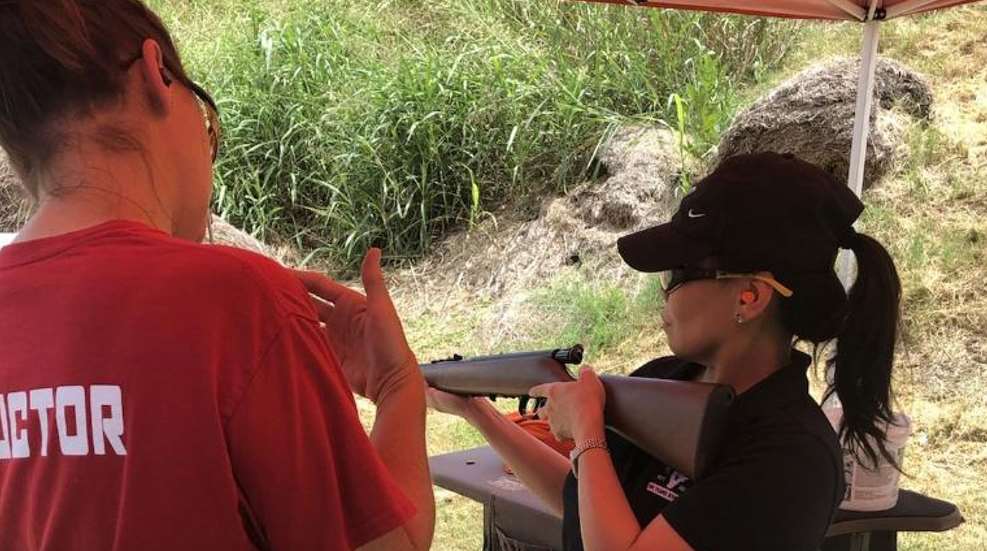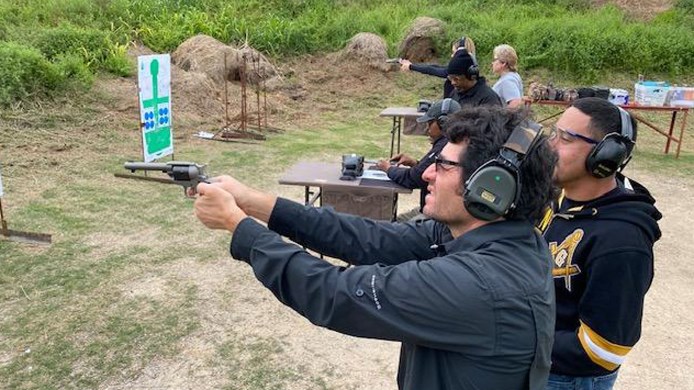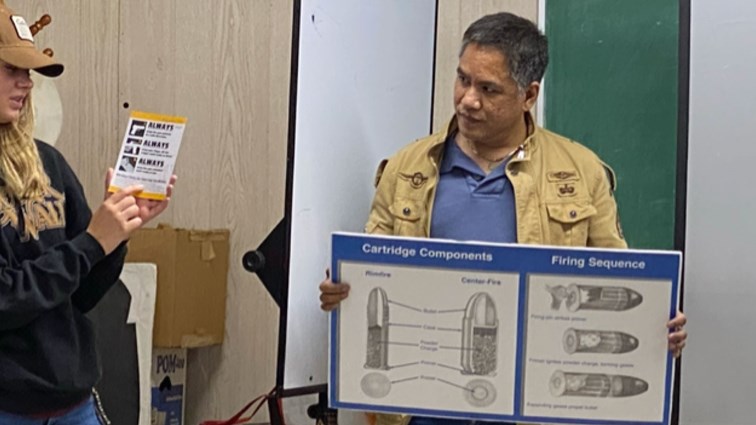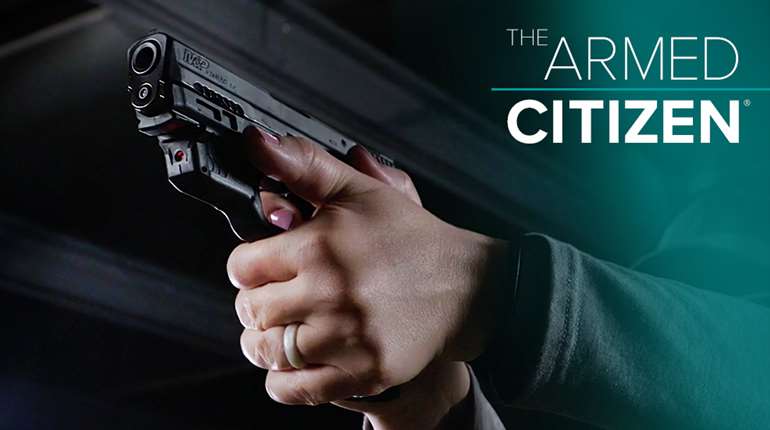
Being an NRA Firearms Instructor does not come without challenges. First are the legal challenges—city, county, state and federal laws and regulations. Once you are sure that you are following all applicable laws and regulations, you are now faced with the challenge of meeting each of your student’s needs.
A good instructor starts preparing for class long before the day it is conducted. This means looking at your class roster and identifying and anticipating any issues you may encounter on the day of class. For example, look at your student’s date of birth. Age-related issues may not be a problem for everyone, but typically, as we get older hearing and eyesight are not what they used to be. Make sure those students are sitting at the front of the class. The oldest student I ever taught was 92. I made sure she was sitting as close to the front as I could get her seated. I also had several different models of .22 caliber revolvers and pistols to use on the range for less recoil, anticipating she might have lost strength in her hands. If any of these concerns developed, I had already begun to overcome any hurdles.
An instructor should also conduct a “phone interview” with potential students. Do not rely on registration information to anticipate challenges with a particular student. A phone interview can be as simple as calling your students to welcome them to your class, and even asking them what they expect to get out of the training. By talking to a future student on the phone you might sense an apprehension in their voice, attitude toward the training, or learn their firearms experience or lack thereof.

One of the most difficult challenges I have encountered is meeting a student where English is not his or her first language. Some language accents can be difficult to understand, not only for the instructor but other students in class. Similarly, some students may have a hard time understanding the English language spoken by the instructor. Remember how big and vast the United States is, encompassing many different regional accents and dialects from the south, midwest, northeast, and western regions.
I look forward to meeting and instructing students who were born and raised in another country. They bring a very different attitude toward guns and the Second Amendment than many native-born students. I have had students from China, Vietnam, Burma, India, Switzerland, and Sweden to name a few. Almost always, the foreign-born student comment that many U.S. citizens take their Second Amendment for granted and think that we should be working harder to protect that right. I have learned a lot from these students, and they also made me a better instructor.
There are legal issues regarding certain individuals taking a firearms training course. Generally, if an individual can purchase a firearm after filling out the ATF form, 4473, Firearms Transaction Record and/or can possess a firearm, they should be allowed to take your course. As an instructor, you need to be aware of issues involving students who were born in another country.
Individuals with a strong foreign accent might indicate that he or she is not from this country. It does not mean that they cannot take any firearms training courses including an NRA Firearms Training Course. Additionally, it does not mean that if an individual does not have a detectable accent, they can take a firearms training course.
The International Traffic in Arms Regulations (ITAR), the federal regulation governing firearms training to non-US citizens, is the set of regulations that was established after the passage of the State Department’s Arms Export Control Act of 1976. According to the NRA Trainers Guide, and discussed during the Basic Instructor Training (BIT), “ITAR restricts training given to non-US Persons. US Persons are US citizens (both natural-born, and naturalized immigrants) and Permanent Resident Aliens.”
NRA Firearms Instructors must be familiar with the NRA policy regarding training.
Current NRA policy regarding any Firearms Training course is:
“Under federal law, certain non-U.S. citizens are prohibited from participating in this course. Only non-U.S. citizens who are: (1) lawful permanent residents (e.g., green card holders), (2) refugees, or (3) individuals who have been granted asylum may participate in this course.”
As an instructor, you must determine if an individual can legally be in your class. If you provide training to a person who is not eligible according to ITAR and the current NRA policy regarding non-US citizens, you may have violated federal law.
Unfortunately, there is no way to know for sure if a student can legally be in your class, especially with the advancement of the quality of modern forged documents. Start by carefully interviewing them. Do not be insulting. Check identification documents such as driver’s licenses, green cards or other items that might prove your student is eligible to take a firearms training course. A state issued Concealed Carry License or License to Carry permit is a good document to ask for. If it is authentic, it shows that the individual has gone through a background check and can legally possess a firearm.

Once you are satisfied that all your students can legally be in your class, you next need to make sure you meet the needs of your students. This includes students that have any language barriers.
It is very important to always use the correct terminology when speaking and demonstrating the correct and safe use of firearms. Students, both foreign and native born, who are not experienced in firearms may not understand any slang references. For example, a few years ago, I was conducting an NRA Basic Pistol Class and was talking about various revolver cartridges. As I was writing on the whiteboard ”357 Mag, .41 Mag, and .44 Mag,” a foreign-born student raised his hand and stated he was confused because he though a mag was the device that held cartridges before they are fired. He was referring to a magazine, so I apologized and corrected myself. I now make sure that when I am speaking about magazines I say “magazines,” and when I am talking about magnums, I say “magnums.”
It is important that you never leave a student behind. Always make sure that all your students understand a topic before you move on. I have seen students who were born in other countries use a translator app on their phone to better understand a word or phrase that was spoken during class time. Remember that many individuals come from countries where possession of firearms is prohibited. As a result, some words or phrases are not translatable because there are no words or phrases in their native country that match those used in the United States.
As an instructor, you may need to pay special attention to non-native students and actively get them involved just as you would a native student who has never handled a firearm. It is very important to remember that “safety” is the most important thing when conducting a firearms training course.
Make sure all your students understand the NRA Gun Safety Rules:
- ALWAYS keep the gun pointed in a safe direction
- ALWAYS keep your finger off the trigger until ready to shoot
- ALWAYS keep the gun unloaded until ready to use
Not only is it important for your students to understand these three Gun Safety Rules, but it is crucial that you as the instructor are setting a good example and modeling the correct behavior. Make sure you follow and demonstrate these rules every time you handle a gun, so the only behavior your students see is the correct way to handle a firearm. Always demonstrate the correct way to handle a firearm so your students are left with a positive and accurate image in their minds.
With hope, any training challenges can be identified before class and you can start making contingency plans. Some challenges are not discovered until the day of class, and that is alright if the instructor accounts for the possibility of having to modify his or her teaching style to accommodate the student. It is your job to teach all your students the basic knowledge, skills, and attitude for owning and operating a firearm in a correct and safe manner.














































